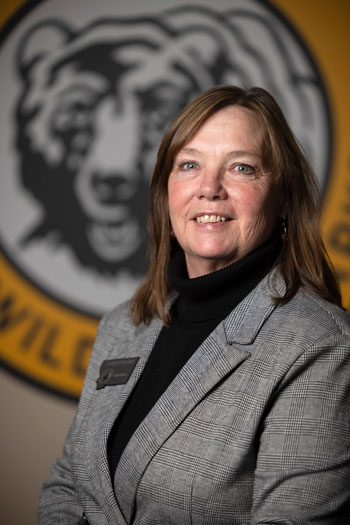MENU

An Evolution in Grizzly Management

Years ago, my kids and I biked along a county road to a spot we love just outside Choteau along the Teton River a half- mile from our house. While they stacked rocks and had sword fights with sticks, I strolled back up to the gravel access road to take in the view.
Looking upstream, I spotted a grizzly bear in the distance walking our direction. I hustled back to my kids and said, “Grab your bikes, it’s time to go!” We made it home quickly and without incident, but I was curious about where the bear was headed, so I hopped in our truck and went back. I found the grizzly in the exact place where my kids had just been playing. It was chilling to imagine what could have happened if we’d surprised that bear up close rather than spotting it from a distance. Back home, I called FWP’s local bear management specialist, who thanked me for reporting the sighting.
That memory is one reason I take personal pride in FWP’s new Grizzly Bear Conflict Dashboard, which debuted this summer along with a Bear Relocation Dashboard. Combined with the Grizzly Bear Mortality Dashboard, these tools add transparency to FWP’s bear management and allow Montana residents and visitors to track bear-related incidents across the state.
That’s especially important in places like Choteau where my grandkids are now the seventh generation of our family to be raised. It was once rare to see a bear in this area, but FWP biologists counted 12 grizzlies in and around Choteau this spring, including three females with cubs. My grandkids usually ride their bikes to school, but not this past spring with that many bears around. Don’t get me wrong. Like most Montanans, I’m thrilled to spot a grizzly in the wild and from a safe distance. But when you find one in your backyard right in town, it’s a whole different matter.
Choteau was once on the fringes of the occupied range of grizzlies in the Northern Continental Divide Ecosystem (NCDE), which contains Glacier National Park and the Bob Marshall Wilderness complex. That range now extends east out onto the prairie well beyond Choteau and even past Great Falls.
This comes as a result of an awe-inspiring recovery made possible by the Endangered Species Act. When grizzlies gained ESA protections in 1975, fewer than 200 bears roamed the NCDE. Today it hosts at least 1,200. In the Greater Yellowstone Ecosystem (GYE), they’ve risen from around 136 bears a half century ago to more than 1,100 today. FWP played a key role every step of the way through its management and research efforts, as did Montana’s citizens, whose patience was vital to the success of the ESA restrictions. This year marks the 50th anniversary of the grizzly bear’s ESA listing in the Lower 48.
It’s possible that by the time you read this, the U.S. Fish & Wildlife Service (USFWS) will have moved to delist bears in the GYE and NCDE, handing management off to Montana, Idaho, and Wyoming. This is the next logical chapter in an incredible story of wildlife restoration. Bear populations exceeded federal recovery goals more than two decades ago, and FWP has been preparing for delisting ever since. In 2022, we released a Statewide Grizzly Bear Management Plan, which, along with laws passed by the 2023 Montana Legislature, will ensure bear populations remain healthy and stable across the state and provide greater flexibility for dealing with problem bears, whether they are killing livestock or getting too close to human settlements.
No matter what the USFWS decides, FWP will continue to engage the public in management while prioritizing human safety. We want a healthy grizzly population in Montana, but we also want children to be able to ride their bikes to school and people to be able to enjoy the outdoors without having to retreat back to their homes like my kids and I did that day.
~Christy Clark, FWP Director
